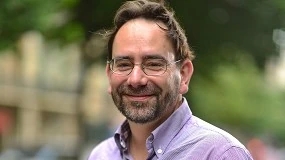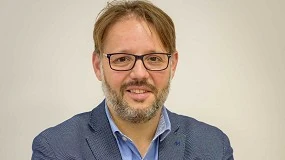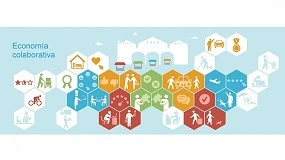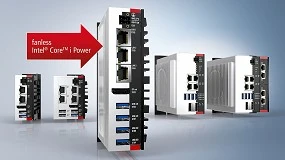SolidWorks World 2012 first General Session
13 February 2012
Recent works
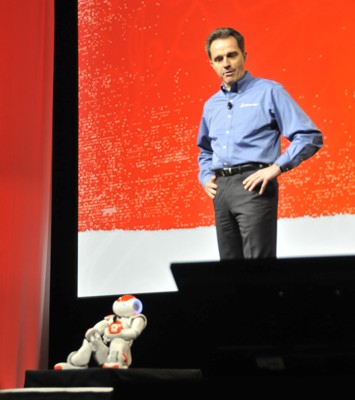
Clean works
SolidWorks likes to let us know that design has an ultimate goal: to live better. Being so, medical applications are probably the best example. Today the example is Dan Herzberg, SolidWorks user and leader of one of their user groups. He needed surgery to replace a valve in his heart with an artificial one. The valve was manufactured by On-X Life Technologies, and was designed in such a way, taking special care of the blood flow through, so that it significantly reduces the need for the implanted to take anticoagulants forever. No need to indicate what the design program was.
Possible works
Dirty works
For non-Americans (or at least for those who do not have a subscription to Discovery Channel) Mike Rowe is entirely unknown. It turns out that this man is the host of a program called 'Dirty Jobs' in which he carries out hard, strange, unpleasant or 'messy' work. What began as a three chapters has grown into a series since 2005. Mike has claimed injustice is done to distinguish between white and blue collar work, suggesting that in fact we all do some of each. He claims than in the U.S. qualified professionals (during dirty work or not ) are still missing. In the later press conference he also claimed we strive for authenticity, which means telling stories with less editing, and show the wrongs. Overpreparation has unintended side effects. Charm is lost distance won. The signer apologises to follow his advice. I'll edit less and be wrong more or less as usual.

Underwater works
Canadians are conducting an oceanographic research program called "Neptune", which consists of a vast network of underwater observatories. Dr. Maia Hoeberechts, a member of the project, has been interviewed by Bernard Charles (the CEO of Dassault Systèmes, which is part of DS SolidWorks). Both have emphasised the fact that the results obtained by the project are free to use, are available for any team of researchers (or anyone) the see and use. Bernard's concept we wanted to convey: collaboration and communication become a target because to achieve outstanding results.
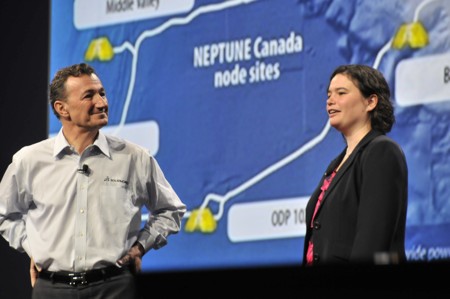
Trying not to work
The General Session today concluded with the presence of Tony Fadell. This man is known by many as 'the father of the iPod'. Obviously, someone with his resumé qualifies as ‘perfectionist obsessed with design.’ After leaving Apple, he's been dedicated to making something as unglamorous as a thermostat. A thermostat, AFAIK, is a plastic box rather awful who is placed half-hidden and that starts and stops the heating or air conditioning. They usually have a few buttons and a little LCD screen. And sometimes, you can program them. But, like with videos once upon a time, (almost) no one programs them. And that, if properly programmed, they can save a lot of energy. Solution: have a program that learns. When someone is at home and when not, and at what times or days someone raises or lowers the temperature. The gadget, of course, connects to the home network (which is taken for granted) via WiFi and you can consult or set it from an iPhone (or equivalent, or a web browser) so that when you get home is warm. And of course, instead of being awful, the gadget is rather cool, and you do not need to hide it.
If we look for green initiatives, this could very well be one of the most effective and efficient. We all pay energy bills each month: the sum of electricity and gas, or electricity and other fuel. For a normal house, more than half is devoted to heating and / or air conditioning. Saving 10% of heating energy means a 5% reduction on energy bills. And it appears that reductions can be achieved, realistically, in the 10 to 30% range. And this reduces energy consumption and CO2 emissions.
The NEST thermostat is only available, at the moment, in the USA. Although, after initial success, they intend to sell all over the world before long. And the question is obvious: why no one had done this before? It's the question everyone asks when something, suddenly, is obvious. Tony had an answer: because the thermostat is not chosen by the end user. Normally the subcontractor chooses it. And the tendency is for the consumer to decides every time in more and more areas. It is no longer unusual to take 'your' computer, not the company's, to work. And 'you' choose it (and having Tony worked for Apple, it is implied which one you choose). It's been called the consumerization of the enterprise.

A lot of work
Bertrand Sicot and Bernard Charlès wanted to send us a message: they have reminded us that the design improves our life and the tendency goes toward collaboration, and this requires communication. And so the question remains: When n!Fuse? Work to do.

